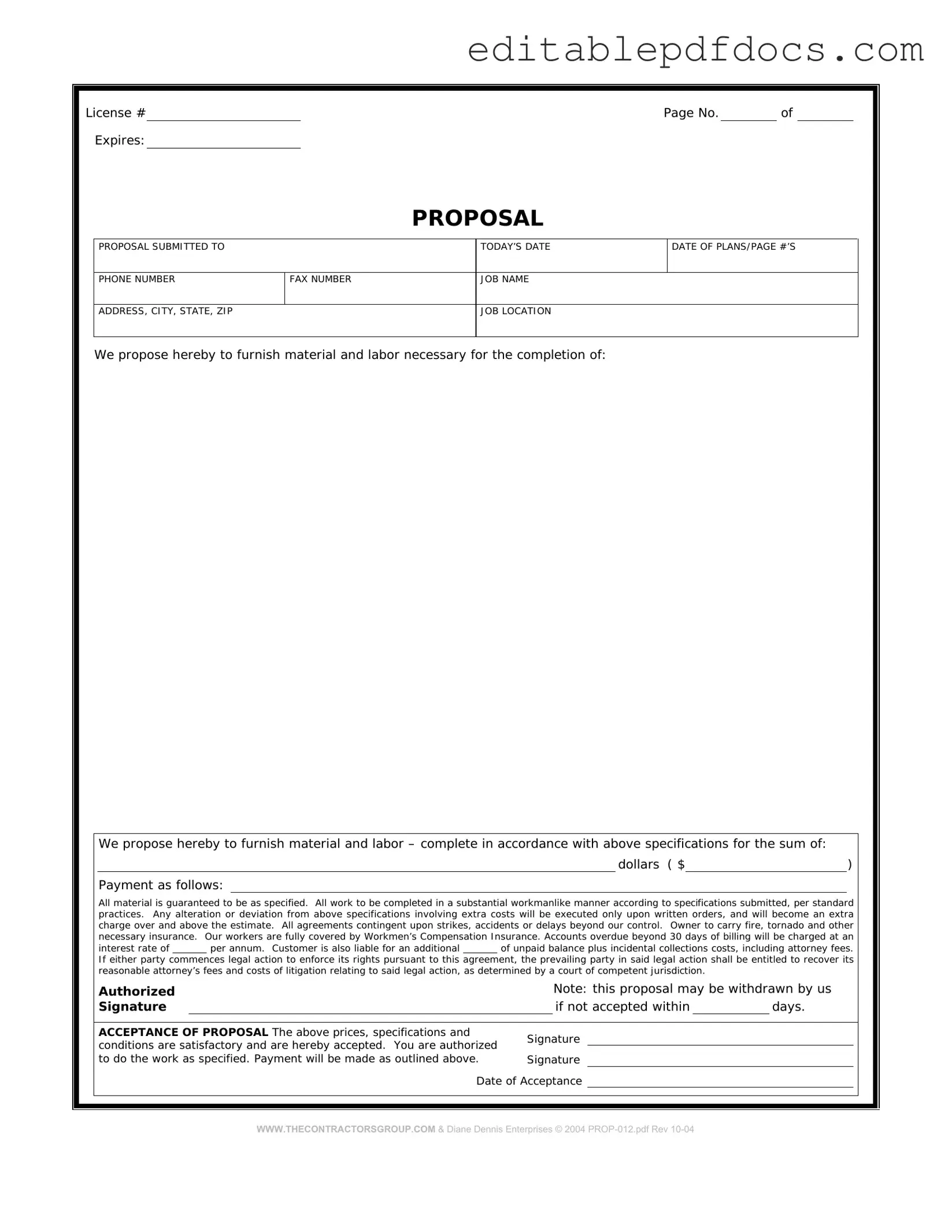Filling out a construction proposal form is a crucial step in securing a project, yet many individuals and businesses make common mistakes that can jeopardize their chances of success. One frequent error is failing to provide complete contact information. Without accurate details, potential clients may struggle to reach out for further discussions or clarifications. It is essential to include not only a phone number but also an email address and a physical address.
Another mistake often seen is the omission of a detailed project description. A vague outline can lead to misunderstandings about the scope of work. Clients need clarity on what to expect, and a comprehensive description helps set appropriate expectations. This description should include specific tasks, materials, and timelines.
Inadequate pricing is another pitfall. Some individuals underestimate costs or fail to break down expenses clearly. A proposal that lacks transparency in pricing can raise red flags for clients. Providing a detailed budget that outlines labor, materials, and any additional fees fosters trust and demonstrates professionalism.
Additionally, people frequently neglect to specify the timeline for project completion. A well-defined schedule is crucial for both parties. Clients want to know when to expect the work to begin and end. Without this information, they may hesitate to move forward, fearing delays or uncertainties.
Moreover, failing to include relevant licenses and insurance information is a significant oversight. Clients often seek assurance that the contractor is qualified and insured. By providing this documentation upfront, contractors can instill confidence and demonstrate their legitimacy.
Another common error involves not addressing potential contingencies. Construction projects can be unpredictable, and acknowledging possible challenges shows foresight and preparedness. Including a section on how unforeseen circumstances will be handled can reassure clients about the contractor's reliability.
People also sometimes overlook the importance of a signature. A proposal without a signature may be perceived as incomplete or unprofessional. This simple act not only validates the document but also signifies a commitment to the terms outlined within.
Finally, failing to proofread the proposal can lead to embarrassing mistakes. Typos or grammatical errors can detract from the professionalism of the document. A polished proposal reflects attention to detail and enhances credibility, making it imperative to review the content before submission.
